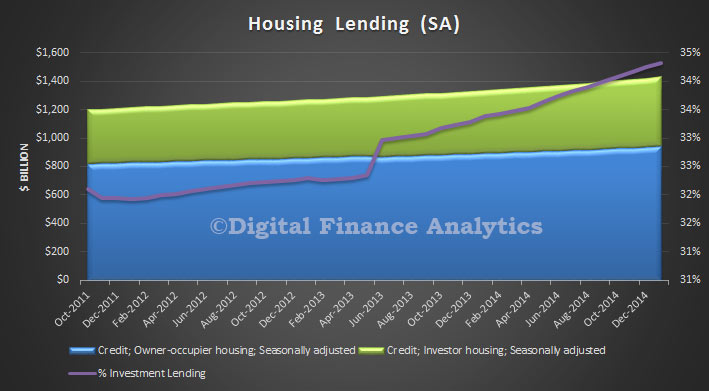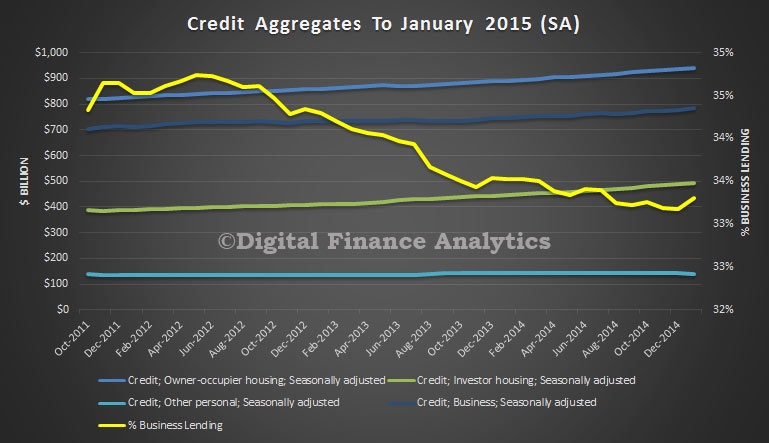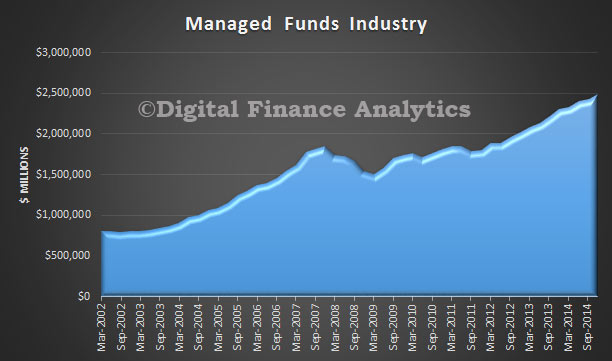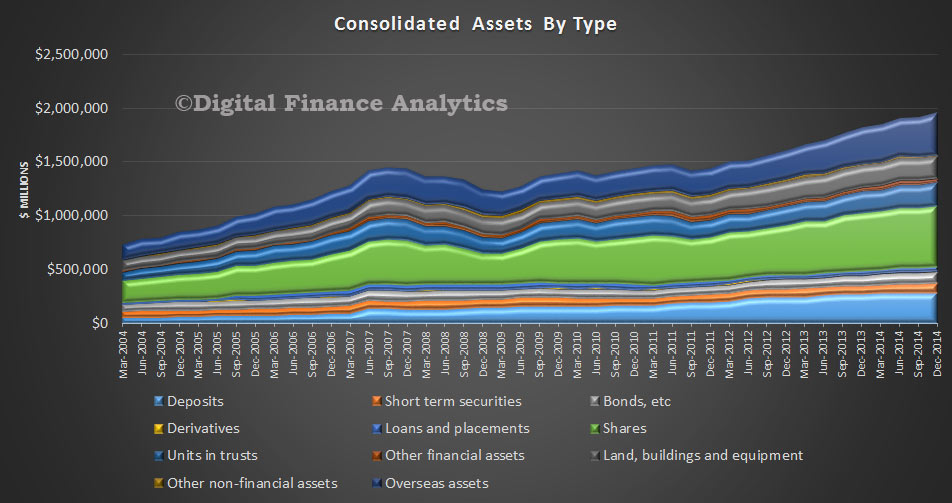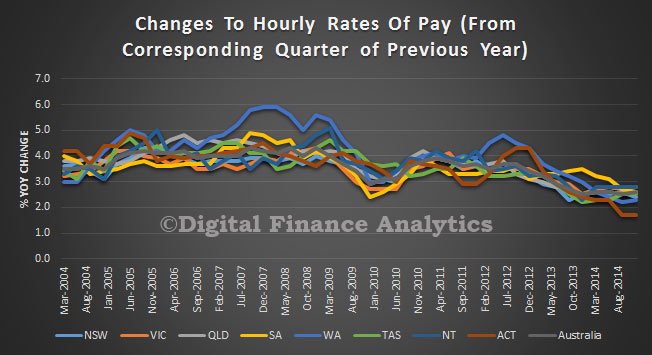Net neutrality is important because it means that internet service providers need to make all content available from providers to consumers without any differentiation in terms of charging or quality of service for different types of traffic. It can apply to content including telephony, web browsing, video, television, and other digital services. Following legal battles in the USA, the Federal Communications Commission has set sustainable rules of the roads that will protect free expression and innovation on the Internet and promote investment in the nation’s broadband networks. It is an important stake in the ground, and means the internet will be more open, not less. So far as Australia is concerned, we think it is time to consider the right neutrality settings here. Today we have rules which assume television broadcasting is different from other content, and various barriers which limit competition, consumer choice, and keep content pricing higher than they should be. Given the emerging role of the NBN, It’s time that Australia carried out a broad based review into net neutrality and how it should be applied to the local telecommunications and content provider industries.
Here are details of the US announcement.
The FCC has long been committed to protecting and promoting an Internet that nurtures freedom of speech and expression, supports innovation and commerce, and incentivizes expansion and investment by America’s broadband providers. But the agency’s attempts to implement enforceable, sustainable rules to protect the Open Internet have been twice struck down by the courts.
The Commission—once and for all—enacts strong, sustainable rules, grounded in multiple sources of legal authority, to ensure that Americans reap the economic, social, and civic benefits of an Open Internet today and into the future. These new rules are guided by three principles: America’s broadband networks must be fast, fair and open—principles shared by the overwhelming majority of the nearly 4 million commenters who participated in the FCC’s Open Internet proceeding. Absent action by the FCC, Internet openness is at risk, as recognized by the very court that struck down the FCC’s 2010 Open Internet rules last year in Verizon v. FCC.
Broadband providers have economic incentives that “represent a threat to Internet openness and could act in ways that would ultimately inhibit the speed and extent of future broadband deployment,” as affirmed by the U.S. Court of Appeals for the District of Columbia. The court upheld the Commission’s finding that Internet openness drives a “virtuous cycle” in which innovations at the edges of the network enhance consumer demand, leading to expanded investments in broadband infrastructure that, in turn, spark new innovations at the edge.
However, the court observed that nearly 15 years ago, the Commission constrained its ability to protect against threats to the open Internet by a regulatory classification of broadband that precluded use of statutory protections that historically ensured the openness of telephone networks. The Order finds that the nature of broadband Internet access service has not only changed since that initial classification decision, but that broadband providers have even more incentives to interfere with Internet openness today. To respond to this changed landscape, the new Open Internet Order restores the FCC’s legal authority to fully address threats to openness on today’s networks by following a template for sustainability laid out in the D.C. Circuit Opinion itself, including reclassification of broadband Internet access as a telecommunications service under Title II of the Communications Act.
With a firm legal foundation established, the Order sets three “bright-line” rules of the road for behavior known to harm the Open Internet, adopts an additional, flexible standard to future-proof Internet openness rules, and protects mobile broadband users with the full array of Open Internet rules. It does so while preserving incentives for investment and innovation by broadband providers by affording them an even more tailored version of the light-touch regulatory treatment that fostered tremendous growth in the mobile wireless industry.
Following are the key provisions and rules of the FCC’s Open Internet Order:
New Rules to Protect an Open Internet
While the FCC’s 2010 Open Internet rules had limited applicability to mobile broadband, the new rules—in their entirety—would apply to fixed and mobile broadband alike, recognizing advances in technology and the growing significance of wireless broadband access in recent years (while recognizing the importance of reasonable network management and its specific application to mobile and unlicensed Wi-Fi networks). The Order protects consumers no matter how they access the Internet, whether on a desktop computer or a mobile device.
Bright Line Rules: The first three rules ban practices that are known to harm the Open Internet:
- No Blocking: broadband providers may not block access to legal content, applications, services, or non-harmful devices.
- No Throttling: broadband providers may not impair or degrade lawful Internet traffic on the basis of content, applications, services, or non-harmful devices.
- No Paid Prioritization: broadband providers may not favor some lawful Internet traffic over other lawful traffic in exchange for consideration of any kind—in other words, no “fast lanes.” This rule also bans ISPs from prioritizing content and services of their affiliates.
The bright-line rules against blocking and throttling will prohibit harmful practices that target specific applications or classes of applications. And the ban on paid prioritization ensures that there will be no fast lanes.
A Standard for Future Conduct:
Because the Internet is always growing and changing, there must be a known standard by which to address any concerns that arise with new practices. The Order establishes that ISPs cannot “unreasonably interfere with or unreasonably disadvantage” the ability of consumers to select, access, and use the lawful content, applications, services, or devices of their choosing; or of edge providers to make lawful content, applications, services, or devices available to consumers. Today’s Order ensures that the Commission will have authority to address questionable practices on a case-by-case basis, and provides guidance in the form of factors on how the Commission will apply the standard in practice.
Greater Transparency:
The rules described above will restore the tools necessary to address specific conduct by broadband providers that might harm the Open Internet. But the Order recognizes the critical role of transparency in a well-functioning broadband ecosystem. In addition to the existing transparency rule, which was not struck down by the court, the Order requires that broadband providers disclose, in a consistent format, promotional rates, fees and surcharges and data caps. Disclosures must also include packet loss as a measure of network performance, and provide notice of network management practices that can affect service. To further consider the concerns of small ISPs, the Order adopts a temporary exemption from the transparency enhancements for fixed and mobile providers with 100,000 or fewer subscribers, and delegates authority to our Consumer and Governmental Affairs Bureau to determine whether to retain the exception and, if so, at what level. The Order also creates for all providers a “safe harbor” process for the format and nature of the required disclosure to consumers, which the Commission believes will lead to more effective presentation of consumer-focused information by broadband providers.
Reasonable Network Management:
For the purposes of the rules, other than paid prioritization, an ISP may engage in reasonable network management. This recognizes the need of broadband providers to manage the technical and engineering aspects of their networks.
- In assessing reasonable network management, the Commission’s standard takes account of the particular engineering attributes of the technology involved—whether it be fiber, DSL, cable, unlicensed Wi-Fi, mobile, or another network medium.
- However, the network practice must be primarily used for and tailored to achieving a legitimate network management—and not business—purpose. For example, a provider can’t cite reasonable network management to justify reneging on its promise to supply a customer with “unlimited” data.
Broad Protection
Some data services do not go over the public Internet, and therefore are not “broadband Internet access” services (VoIP from a cable system is an example, as is a dedicated heart-monitoring service). The Order ensures that these services do not undermine the effectiveness of the Open Internet rules. Moreover, all broadband providers’ transparency disclosures will continue to cover any offering of such non-Internet access data services—ensuring that the public and the Commission can keep a close eye on any tactics that could undermine the Open Internet rules.
Interconnection: New Authority to Address Concerns
For the first time the Commission can address issues that may arise in the exchange of traffic between mass-market broadband providers and other networks and services. Under the authority provided by the Order, the Commission can hear complaints and take appropriate enforcement action if it determines the interconnection activities of ISPs are not just and reasonable.
Legal Authority: Reclassifying Broadband Internet Access under Title II
The Order provides the strongest possible legal foundation for the Open Internet rules by relying on multiple sources of authority including both Title II of the Communications Act and Section 706 of the Telecommunications Act of 1996. At the same time, the Order refrains – or forbears – from enforcing 27 provisions of Title II and over 700 associated regulations that are not relevant to modern broadband service. Together Title II and Section 706 support clear rules of the road, providing the certainty needed for innovators and investors, and the competitive choices and freedom demanded by consumers, while not burdening broadband providers with anachronistic utility-style regulations such as rate regulation, tariffs or network sharing requirements.
- First, the Order reclassifies “broadband Internet access service”—that’s the retail broadband service Americans buy from cable, phone, and wireless providers—as a telecommunications service under Title II. This decision is fundamentally a factual one. It recognizes that today broadband Internet access service is understood by the public as a transmission platform through which consumers can access third-party content, applications, and services of their choosing. Reclassification of broadband Internet access service also addresses any limitations that past classification decisions placed on the ability to adopt strong open Internet rules, as interpreted by the D.C. Circuit in the Verizon case. And it supports the Commission’s authority to address interconnection disputes on a case-by-case basis, because the promise to consumers that they will be able to travel the Internet encompasses the duty to make the necessary arrangements that allow consumers to use the Internet as they wish.
- Second, the proposal finds further grounding in Section 706 of the Telecommunications Act of 1996. Notably, the Verizon court held that Section 706 is an independent grant of authority to the Commission that supports adoption of Open Internet rules. Using it here—without the limitations of the common carriage prohibition that flowed from earlier the “information service” classification—bolsters the Commission’s authority.
- Third, the Order’s provisions on mobile broadband also are based on Title III of the Communications Act. The Order finds that mobile broadband access service is best viewed as a commercial mobile service or its functional equivalent.
Forbearance: A modernized, light-touch approach
Congress requires the FCC to refrain from enforcing – forbear from – provisions of the Communications Act that are not in the public interest. The Order applies some key provisions of Title II, and forbears from most others. Indeed, the Order ensures that some 27 provisions of Title II and over 700 regulations adopted under Title II will not apply to broadband. There is no need for any further proceedings before the forbearance is adopted. The proposed Order would apply fewer sections of Title II than have applied to mobile voice networks for over twenty years.
• Major Provisions of Title II that the Order WILL APPLY:
- The proposed Order applies “core” provisions of Title II: Sections 201 and 202 (e.g., no unjust or unreasonable practices or discrimination)
- Allows investigation of consumer complaints under section 208 and related enforcement provisions, specifically sections 206, 207, 209, 216 and 217
- Protects consumer privacy under Section 222
- Ensures fair access to poles and conduits under Section 224, which would boost the deployment of new broadband networks
- Protects people with disabilities under Sections 225 and 255
- Bolsters universal service fund support for broadband service in the future through partial application of Section 254.
• Major Provisions Subject to Forbearance:
- Rate regulation: the Order makes clear that broadband providers shall not be subject to utility-style rate regulation, including rate regulation, tariffs, and last-mile unbundling.
- Universal Service Contributions: the Order DOES NOT require broadband providers to contribute to the Universal Service Fund under Section 254. The question of how best to fund the nation’s universal service programs is being considered in a separate, unrelated proceeding that was already underway.
- Broadband service will remain exempt from state and local taxation under the Internet Tax Freedom Act. This law, recently renewed by Congress and signed by the President, bans state and local taxation on Internet access regardless of its FCC regulatory classification.
Effective Enforcement - The FCC will enforce the Open Internet rules through investigation and processing of formal and informal complaints
- Enforcement advisories, advisory opinions and a newly-created ombudsman will provide guidance
- The Enforcement Bureau can request objective written opinions on technical matters from outside technical organizations, industry standards-setting bodies and other organizations.
Fostering Investment and Competition
All of this can be accomplished while encouraging investment in broadband networks. To preserve incentives for broadband operators to invest in their networks, the Order will modernize Title II using the forbearance authority granted to the Commission by Congress—tailoring the application of Title II for the 21st century, encouraging Internet Service Providers to invest in the networks on which Americans increasingly rely.
- The Order forbears from applying utility-style rate regulation, including rate regulation or tariffs, last-mile unbundling, and burdensome administrative filing requirements or accounting standards.
- Mobile voice services have been regulated under a similar light-touch Title II approach, and investment and usage boomed.
- Investment analysts have concluded that Title II with appropriate forbearance is unlikely to have any negative on the value or future profitability of broadband providers. Providers such as Sprint, Frontier, as well as representatives of hundreds of smaller carriers that have voluntarily adopted Title II regulation, have likewise said that a light-touch, Title II classification of broadband will not depress investment.

